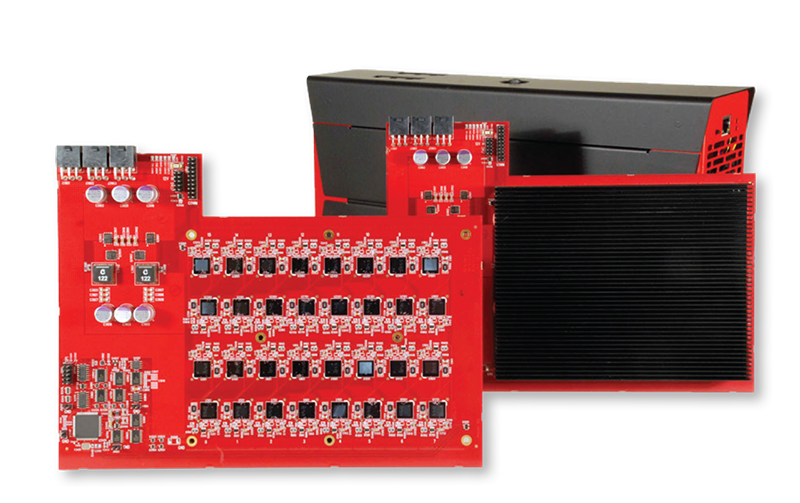Design Note #124
Blockchain mining hardware combines the power of multiple application specific integrated circuits (ASICs). Each ASIC device contains within itself hundreds of individual hashing engines. Each hashing engine performs its one individual search for that elusive seemingly-random 64 bit number which may successfully close the current-working-block in the ever-expanding chain-of-blocks called the blockchain. Upon discovery of a candidate answer, that 64 bit number is transferred upstream for pay day. An accepted candidate answer, termed a nonce, causes the network to close off the working block, add the closed block to the chain, and pay the nonce- finder. The network starts a new block, and the nonce-finding race begins again.
Laddered multi-ASIC blockchain processing combines the computing-power of multiple ASIC devices efficiently onto a single circuit board. Multiple ASIC devices, each containing multiple hashing engines, each operating at high computational speed makes for tera ops of computational activity.
Each ASIC is powered in a serial-laddered configuration. Requiring a nominal core voltage of 0.5V, each ASIC’s operating point oats within the chain of ASIC devices. Ground reference of floating ASIC devices is a significant challenge. Real- time power supply status monitoring and programmable controls allow precise operating point control.
Dissipating about 500W, thermal management of the circuit board design is crucial to success. Component selection, circuit board layout, thermal transfer considerations, thermal simulation, and practical design choices made thermal management a possibility in this very dense ASIC board-level design.
The development of custom electronic products for our OEM clients is OTEC’s entire business. The design of high performance blockchain mining hardware with rapid design cycles, demanding technical requirements, and unforgiving schedules sets us apart. Contact OTEC today!
